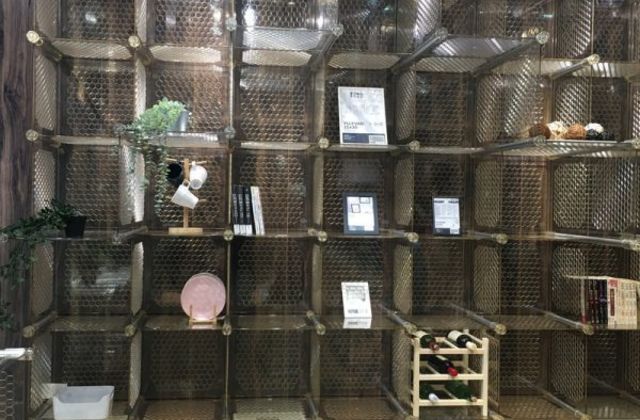What is it? USM produces furniture systems for offices and homes. The furniture is designed for modularity, meaning that the items can be redesigned and rebuilt to suit changing needs throughout customers’ lifetimes. The company promises high quality items that can last a lifetime, with wear-resistant materials, craftsmanship, and timeless style. Two of their products have also been Cradle to Cradle certified (USM, 2020c).
Why is this important? Furniture creates environmental impacts through resource use and greenhouse gas emissions during its production, in its maintenance and in its after-use. As furniture is subject to changing interior design styles and tastes, it is oftentimes discarded prematurely due to perceived obsolescence of its design and creates a bulky waste problem. In the European Union, households consume an estimated 8.6 million tons of furniture while 10 million tons of furniture are discarded by businesses and consumers each year (Forrest et al, 2017).
Main resource strategy: Slowing through modularity and long-lasting furniture, as well as individual services for customers.
Other resource strategies: Closing through using recyclable materials, with two of their products certified as Cradle 2 Cradle-compliant.
Business model aspects:
- Value Proposition: The USM value proposition is to provide a furniture system along with the service of designing, building, assembling and amending it. The systems are marketed based on their high quality, modularity to fit any need, and long product life. They are also designed for recyclability (2020c). The USM Haller system can also be considered an icon of design, as it is part of the permanent collection at the Museum of Modern Art, New York.
- Value Creation & Delivery: USM products can be designed to suit specific customer needs or bought as a pre-designed system. The company offers services around the “furniture configuration, manufacturing, delivery, installation and customer support” (2020b). A 3D configurator tool offers the possibility to pre-design one’s own furniture on the company website. While the initial point of contact is through the purchase of the system, the company “aim[s] to build lifetime relationships with [their] customers, working with them to reconfigure their furnishings to meet their developing needs” (USM, 2020d).
- Value Capture: The main value capture is through the sale of furniture systems with a basic 1-box model starting at approx. €390. While additional services such as installation, redesign or repair might be charged to the customer, that is not specified on the company website.
Strategies for degrowth/ sufficiency (based on sufficiency strategies from Niessen & Bocken, 2021):
- Design & Green alternative: USM builds its furniture on the basis of high quality, endurance and modularity. As the company points out on the webpage about the USM values: “wear-resistant materials, fine craftsmanship, durable designs, and timeless style all ensure that USM furniture lasts a lifetime” (USM, 2020d).
- Life extension service: The website encourages customers to get in touch if repair services are needed.
- Personalised production: Furniture systems can be designed for the customer, altered and extended as needed.
Business model experimentation practices: USM has been operating as a family business for several generations since 1885. While the company now has offices and showrooms across the globe, the first modular furniture system designed in 1963 by USM in cooperation with architect Fritz Haller, USM Haller, was built as office furniture for the company‘s own offices only. Due to its unusual design, it became popular and in 1969, USM was tasked with furbishing the Rothschild Bank in Paris with the USM Haller system (USM, 2020a).
Tools, methods and approaches used: Cradle to Cradle certification has been achieved for the two furniture systems USM Haller and USM Kitos M.
Sustainability outcomes: No specific sustainability outcomes have been reported yet.
Sources:
Forrest, A., Hilton, M., Ballinger, A. & Whittaker, D. (2017). Circular Economy Opportunities in the Furniture Sector. Brussels: European Environmental Bureau. Accessed 27 November 2020 at: https://eeb.org/library/circular-economy-opportunities-in-the-furniture-sector/
USM (2020a). USM History. Accessed 30 November 2020 at: https://www.usm.com/en/office/about-usm/usm-history/
USM (2020b). Service. Accessed 30 November 2020 at: https://www.usm.com/en/office/about-usm/service/
USM (2020c). Sustainability. Accessed 30 November 2020 at: https://www.usm.com/en/office/about-usm/sustainability/
USM (2020d). Values. Accessed 30 November 2020 at: https://www.usm.com/en/office/about-usm/values/
***
About project Circular X
Project Circular X is about ‘Experimentation with Circular Service Business Models’. It is an ambitious research project funded by the European Research Council (ERC) which supports top researchers from anywhere in the world. Project CIRCULAR X runs from 2020-2025. The project is led by Principal Investigator (PI) Prof Dr Nancy Bocken, who is joined by a multidisciplinary team of researchers at Maastricht Sustainability Institute (MSI), Maastricht School of Business and Economics, Maastricht University. The project cooperates with businesses who want to innovate towards the circular economy.
Project Circular X addresses a new and urgent issue: experimentation with circular service business models (CSBMs). Examples of such new business models include companies shifting from selling products to selling services and introducing lifelong warrantees to extend product lifetimes. However, CSBMs are far from mainstream and research focused on experimentation is little understood. The research aims to conduct interdisciplinary research with 4 objectives:
- Advancing understanding of CSBMs; their emergence and impacts
- Advancing knowledge on CSBM experimentation
- Developing CSBM experimentation tools
- Designing and deploying CSBM experimentation labs
Funding source
This project has received funding from the European Research Council (ERC) under the European Union’s Horizon 2020 research and innovation programme, grant agreement No. 850159.
Using this information
When you cite this publication, please use the following source:
Circular X. (2020) Case study: USM Modular Furniture. Accessed from www.circularx.eu



